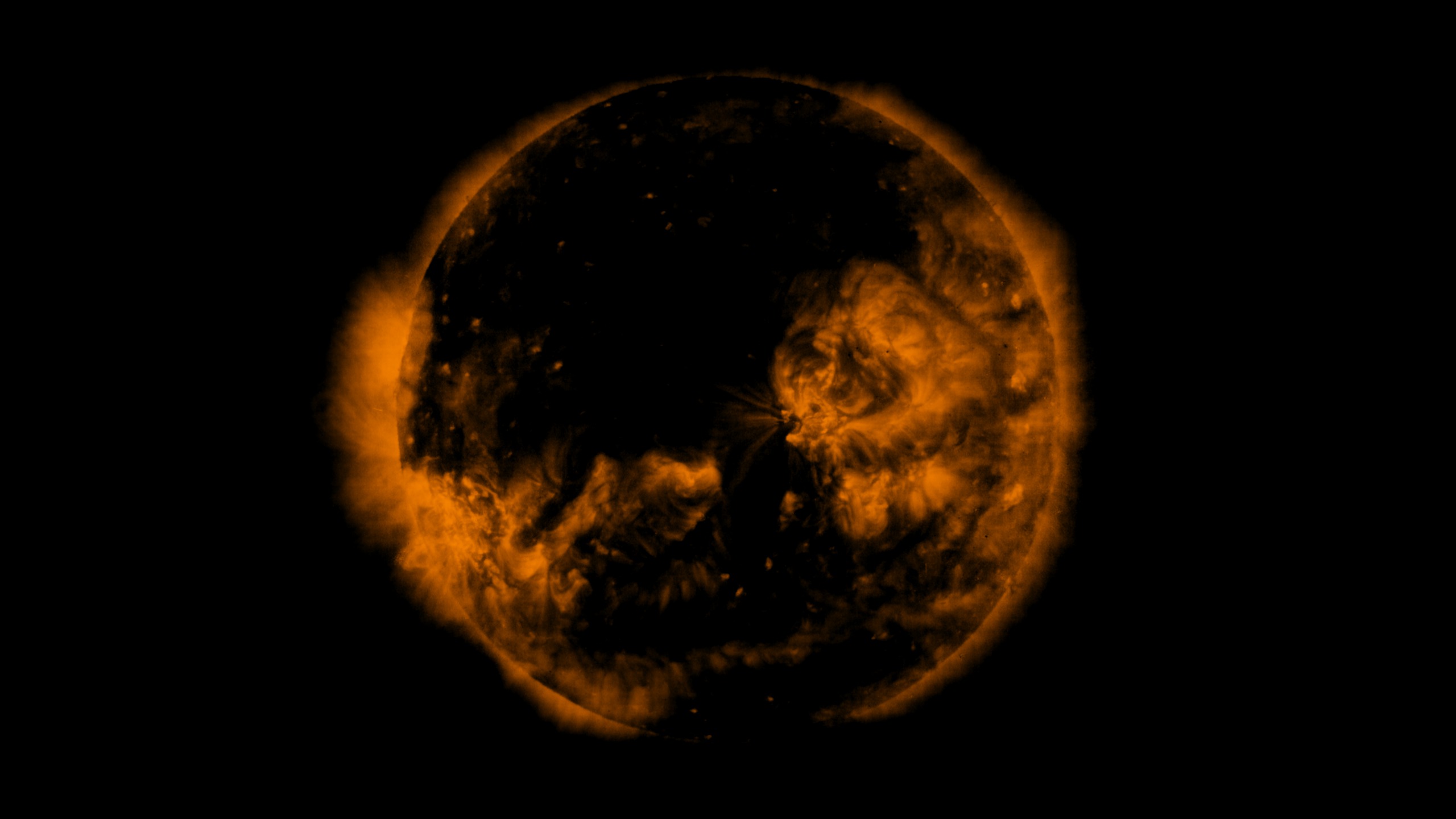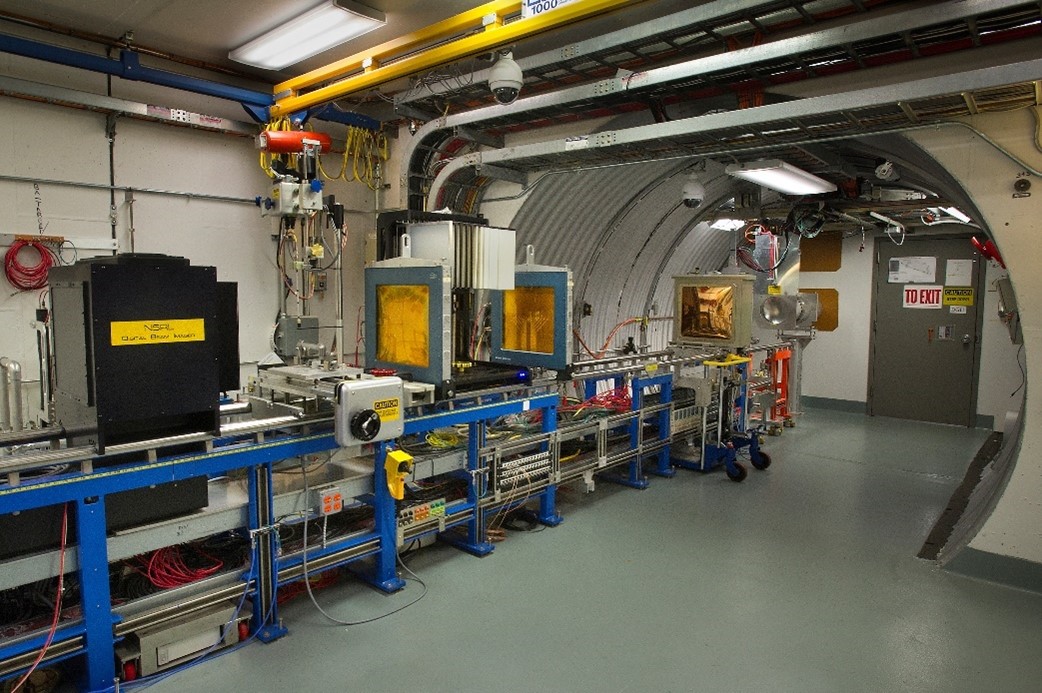The Future: Space Weather and Accelerator Training
 |
| Image Credit: NASA |
Space weather refers to the variation in the flow of high-energy charged particles in space from the sun and from outside the solar system. It can especially degrade or damage living things, such as astronauts, and electronics in spacecraft. As we enter a period with a greater presence in space, promising a new age of exploration and economic growth, there is a need to understand the effect of radiation on people and electronics and how to mitigate its harmful effects.
The most widely used approach to reach this understanding is through simulating space radiation on Earth using particle accelerators. Brookhaven National Laboratory on Long Island used its high-energy, heavy-ion synchrotron to host NASA biology researchers studying this unique radiation as far back as the 1990s. The NASA Human Research Program (NASA HRP) studies human spaceflight compatibility, which led to the opening of a dedicated space radiation laboratory at the accelerator in 2003, now called the NASA Space Radiation Laboratory (NSRL).
Biology and Radiation
The primary motivation for NASA’s biology work is the need to characterize and mitigate negative health outcomes to astronauts as a consequence of space missions. They are most concerned with carcinogenesis, and cardiovascular, immune, and central nervous system risks. It is known that ionizing radiation causes cancer, but much has been learned about some of the mechanisms causing cancer and how to prevent, mitigate, or treat those issues should they arise. Researchers have seen that DNA and expressed genes are altered, organs get damaged, and mental executive functions are impaired by long-term, high-dose space radiation. Right now, NASA’s focus is reducing the uncertainty of risks for long-term, deep-space missions such as the future phases of the Artemis mission and planning countermeasures for those risks. Low Earth orbit and other regions within the Van Allen belts see a different radiation field compared to lunar and trans-lunar fields, where there is no protection from Earth’s magnetic field.
Those protected areas are dominated by low-energy protons and electrons, which are easier to shield and have less biological effect compared to high-energy, heavy (HZE) ions found in deep space. Biology samples irradiated by accelerators are designed to replicate real biological systems that would be seen in a long-duration, deep-space mission. Some experimenters bring certain types of organ and epithelial cells grown on flasks or well plates to observe what are called “omics” – which, broadly speaking, studies DNA sequencing, gene expression, and protein structures. There are also many studies that use rats or mice to model “whole body” effects and mitigation studies where a living organism is necessary to evaluate effects from heavy ions on “large-scale” systems such as kidney function or neurological impact. Recently, plant studies have begun to investigate the impact on growth, survival, and root microbiomes. Long-duration missions, such as the future Artemis 4 lunar habitat module or Mars expeditions, would greatly benefit from renewable fresh food sources that plants could provide.
Electronics and Radiation
The use of particle accelerators to simulate the effect of space weather on electronics has been done for some time, but there is a shortage of facilities and trained staff, engineers, and scientists at present. There are plans for creating new facilities, including an expansion of the one at Long Island’s Brookhaven National Laboratory. The expansion at BNL will give the electronics and radiation community thousands more hours of experimental testing time. Given the increasing demand for operations in space, this is a very timely effort.
Training in Accelerator Science and Engineering
Related to the shortage of trained workers for accelerators, a traineeship program titled “Stony Brook University Ernest Courant Traineeship in Accelerator Science and Engineering” attempts to address this problem. This is a program to train graduate students on particle accelerator technology that has been running for a few years through a Dept. of Energy grant and the Center for Accelerator Science Education, a joint Stony Brook University and Brookhaven National Laboratory venture. The DOE funding recognizes this as an effort to do workforce development in this area. Students can receive a certificate in this area after accomplishing 12 credits of work. Physics and some engineering students have participated in this program. Although any Stony Brook graduate student can participate in this program, some financial support is available for students who are US citizens and permanent residents. This workforce development effort meets a national need. For articles on space weather and the Courant Traineeship program co-authored by ECE Faculty Brown and Robertazzi, see this link:
For the articles on space weather and the Courant Traineeship program co-authored
by ECE
Faculty Brown and Robertazzi, see this link:
https://higherlogicdownload.s3.amazonaws.com/APS/9cf62627-7088-4bd3-bf97-
6adfc913f623/UploadedImages/APS_DPB_Newsletter_2023_final_2.pdf
Trevor Olsen of BNL contributed key parts of this article.


